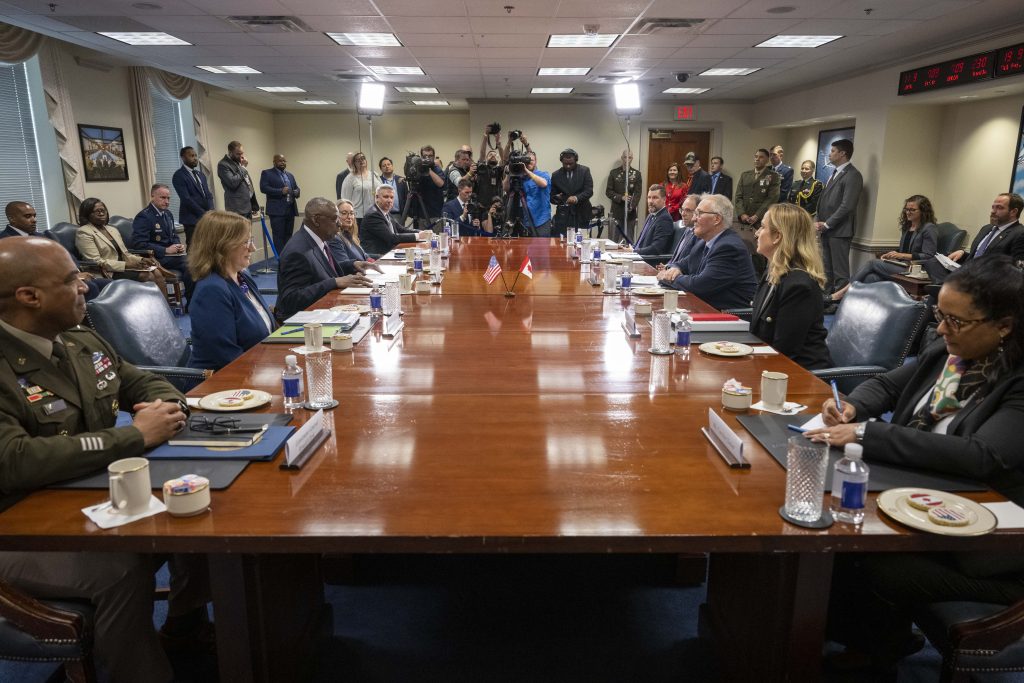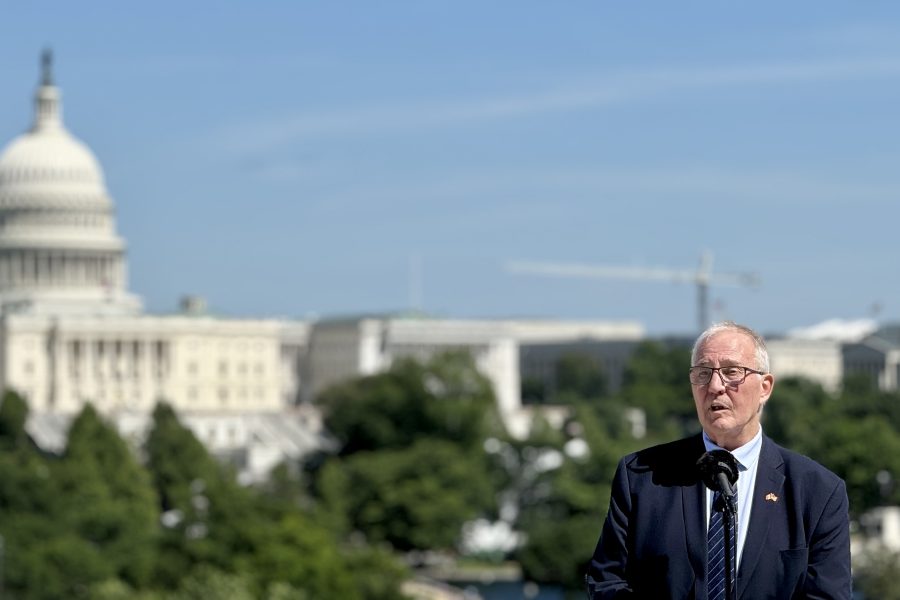Canada’s defense minister said a Chinese spy balloon‘s infamous weeklong path over North America in 2023 was a “wake-up call” for his country, as he shuttled around Washington to sell Ottawa’s bolstered defense strategy to his American allies.
“The balloon incident, I think, was a good wake-up call for all of us that we needed to do more,” Bill Blair told Air & Space Forces Magazine from the rooftop of the Canadian embassy during a news conference with the Capitol dome looming in the background May 13. “It really put a lot of energy behind NORAD modernization, for example, because we saw the limitation of our existing domain awareness assets.”
On May 13, Blair met with Secretary of Defense Lloyd J. Austin III at the Pentagon and spoke to the military press corps before jetting to the Canadian Embassy for a think tank discussion attended by academics, aides, and defense attachés, pledging that Canada will be a more robust military power in the future.
Blair and Prime Minister Justin Trudeau unveiled “Our North, Strong and Free: A Renewed Vision for Canada’s Defense” in April.
In 2023, Canada spent just 1.38 percent of gross domestic product on defense, far short of NATO’s two percent target. The government now says Canada’s defense spending will be 1.76 percent of GDP by 2029-2030—still short of NATO’s target. However, much of the investment is in capabilities that can help the U.S.
“Continental defense is the primary focus,” a senior U.S. defense official told reporters of Canada’s plans last week, highlighting investments in airpower, over-the-horizon radar, and surveillance. “I’m very encouraged across the board with everything I’ve seen out of Canada.”
The plan includes $38.6 billion strengthen NORAD over the next 20 years. As Blair indicated, North America is no longer a sanctuary from nefarious aerial activity, highlighted by the Chinese spy balloon’s path over Alaska, Canada, and the continental United States in January and February of 2023.
“Some of the investments we are committed to making are in many ways justified by the concerns raised in that incident,” Blair said. “Standing up for the principle of integrity and sovereignty of borders also requires us to put action behind our words.”
While there has not been a foreign balloon incursion into the U.S. since, the new boss of NORAD, Air Force Gen. Gregory M. Guillot, has said Chinese aircraft could be flying near the U.S. airspace by the end of the year. China has declared itself a “near-Arctic state,” to the concern of U.S. officials and Blair, who repeatedly highlighted the threat of more Russian and Chinese submarines coming towards North America as global warming opens up waterways.
“There is a great deal of work that needs to be done between Alaska and Norway,” Blair said during a Defense Writers Group event. “A great deal of that responsibility is Canada’s. I’m absolutely committed now. It’s clearly articulated in our defensive policy update that we’re about to step into that space.”
As for aerial threats, Canada’s fighter fleet comprises aging, unreliable CF-18 Hornets and too few experienced pilots to operate them. After the Chinese balloon incident, what turned out to be a likely harmless balloon crossed into Canadian airspace in the days afterward. It was American F-22 Raptors, not Canadian fighters, that took the object out over Canada on Trudeau’s order. NORAD provides for the common defense of North America by the two countries’ militaries.
To bolster its own airpower capabilities after years of delayed modernization, Canada ordered 88 F-35s, its first purchase of the type, in 2023, despite having been a partner in the Joint Strike Fighter program—later dubbed the F-35—since the 1990s.
“I need to be able to fly new fighter jets that we’re acquiring into that space to fulfill my responsibilities,” Blair said. “I’ve got a lot of work to do and I’ve commitments to the United States that that we’re going to step up into that space. I want the Canadian Armed Forces to be persistently present in the north. I think even defending our own sovereignty requires more than occasionally flying a plane overhead.”

